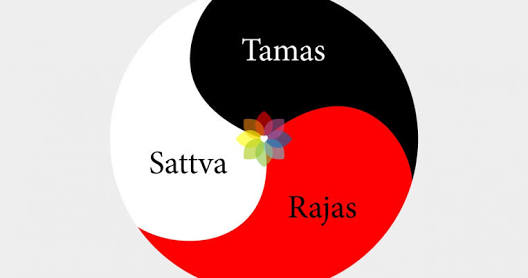The world around us

“Earth, water, fire, air, ether, mind, intelligence and false ego – altogether these eight comprise My separated material energies.” (Bhagavad-gita 7.4)
Material nature is characterized by creation, maintenance and dissolution. Nothing is permanent. Everything is created at a certain moment, goes through a number of changes and perishes in the end.
Material nature is called maya – a great illusion. It looks like a tangible reality, but the next moment everything is evaporated like the dashing foam of the sea or a cloud in the sky.
However, we usually have a different viewpoint on material nature. We (conditioned souls) see the material world as our opportunity to express ourselves and satisfy our needs.
We see that we are able to mold material nature according to our needs and that by the process of learning from mistakes we get better and better at it. And then, of course, there are also things that are out of our control; they just happen… by chance…
Now I would like to make the point here that chance does not exist. That we call something chance when we can’t see the mechanism behind it, when we don’t understand how it works.
There must be a grand master plan. It is up to us to discover what that plan is.
But even before starting to explore that we should know one thing. For someone on a spiritual path this is the most important thing to know about material nature.
Material nature makes us blind. It covers our consciousness.

When you are able to understand how nature covers your consciousness you have won. Then you are holding the key for recovering your pure original consciousness in your hands.
This has to be unpacked carefully. This article will just give you a basic insight into this “mystery”. It might change a lot.
Material nature covers our consciousness according to how we associate with her or how you deal with her.
We absorb the qualities of the things and people we associate with. A walk through the forest leaves one impression on you, driving with your car during rush hour another, and a visit to a bar late at night with drunken people all around still another.
The first experience is surcharged by the quality of goodness, the second by the quality of passion, and the third by the quality of ignorance.
Bhagavad-gita chapter 14 lays out the basic principles. Material nature appears in three different modes, or qualities, with one of them dominating according to different times, places and circumstances.
In the mode of goodness we develop qualities like truthfulness, empathy, cleanliness, tolerance, patience, forgiveness and compassion. The mode of goodness leads to elevation of consciousness, happiness, knowledge and wisdom.
In the mode of passion we develop a strong desire for achievement, competitiveness, but also restlessness, hankering for wealth and power, and ultimately greed and envy. The mode of passion leads to frustration and suffering.
In modern society passion is regarded as positive and an impetus to move things to improve our lives and the world. But a closer look at it reveals that passion makes us feel joyful in the beginning but miserable in the end.
Under the mode of passion our desires increase, sometimes uncontrollably. Take a millionaire, for example. One million is certainly not enough, you have to make a second one, a third one.
Under the mode of passion, when one goal is achieved, we immediately have to go for another goal. There is just a very shallow feeling of satisfaction, then again emptiness, which has to be filled up with new exiting plans. We are bound to endeavor very hard and spend most of our life energy pursuing it.
And this isn’t the worst mode yet…
The mode mode of ignorance is characterized by laziness, darkness and intoxication, and it leads to foolishness and craziness.
The modes always exist in a mixed form. Sometimes the mode of goodness (sattva) prevails, sometimes passion (raja) and sometimes ignorance (tama).

The three modes are present everywhere in the material world. We are under the influence of the modes as they are present in the places we stay, the activities we perform, the music we hear, the food we eat… but more than everything else by the people we associate with.
For the development of positive human qualities and for the pursuit of self-realization, only the mode of goodness is desirable, as you might already have concluded.
That’s why it’s so important for humans to develop the mode of goodness.
BUT HOLD ON A FOR SECOND… Although it is very conducive to develop the mode of goodness, it is not enough. After all it is still material consciousness, which is alien to the spirit soul. The soul can never be happy in a material atmosphere.
Therefore, one who seeks to transcend material consciousness altogether and attain pure spiritual life has to be overcome even the mode of goodness.
Now, how can this be done??
It can be done only by purely spiritual activities like bhakti.
You can find an outline of those activities in BHAKTI PRACTICES.
“One who engages in full bhakti, undeviating under all circumstances, at once transcends the modes of material nature and thus comes to the level of brahman.” (Bhagavad-gita 14.26)